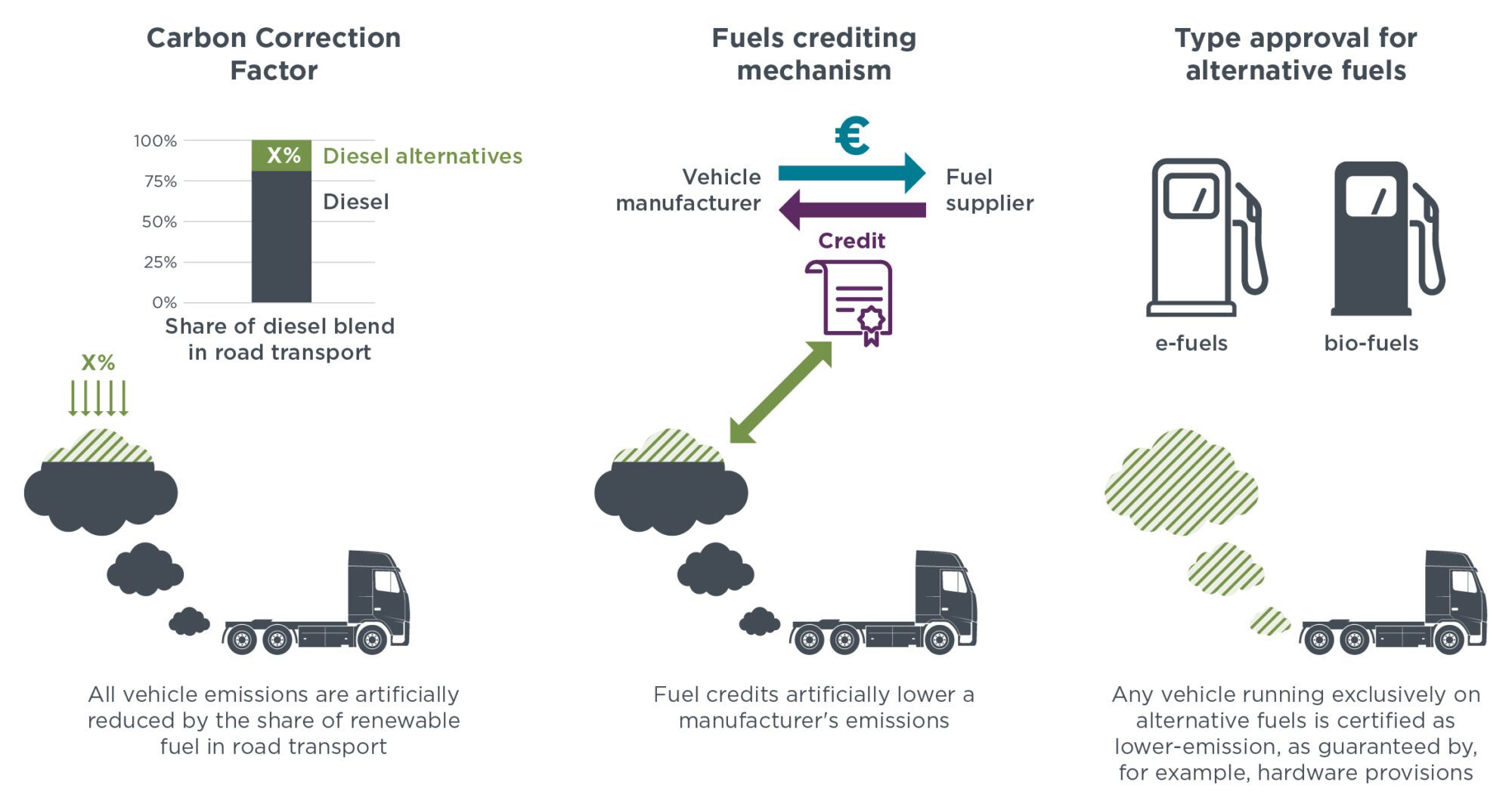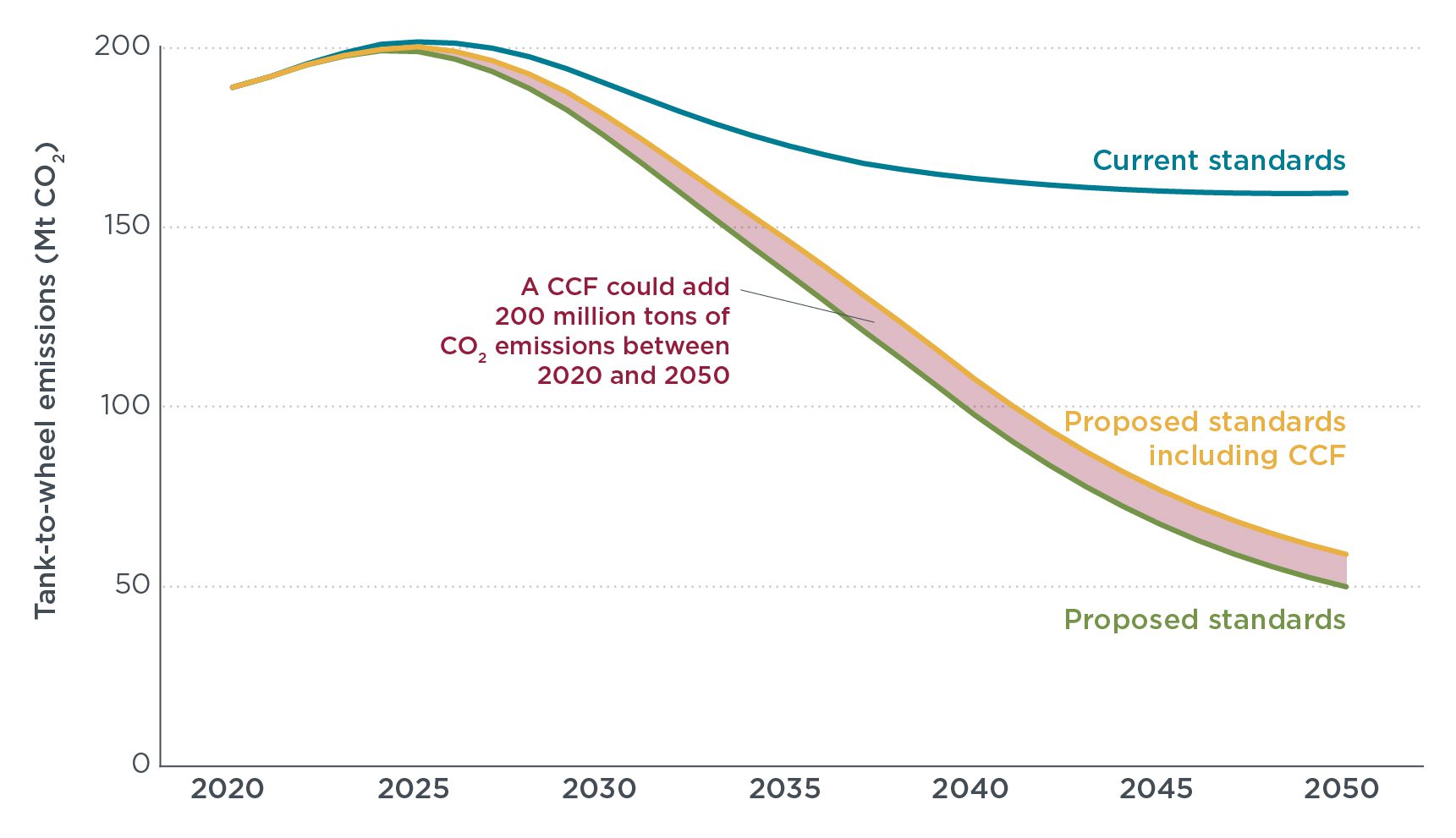Risks of crediting alternative fuels in Europe’s CO2 standards for trucks and buses
Briefing
Assessing the risks of crediting alternative fuels in Europe’s CO2 standards for trucks and buses
The European Parliament and the Council of the EU are currently discussing modifications to the European Commission’s proposal to revise the CO2 standards for trucks and buses, the main legislative file to reduce emissions from the heavy-duty sector in the EU until 2050. These modifications include plans to introduce the crediting of alternative fuels towards a vehicle’s certified CO2 emissions. This study assesses the proposed mechanisms and identifies potential risks that would dilute the climate benefits of the Commission’s proposal.
The three mechanisms in discussion include:
- A carbon correction factor (CCF), which would credit the certified emissions of a vehicle based on the share of alternative fuels in Europe’s road transport.
- A fuels crediting system, whereby manufacturers would pay fuel suppliers to blend additional quantities of alternative fuels and receive a credit in return which they can apply towards vehicle emissions.
- A type-approval process whereby a vehicle running on pure alternative fuels would certified as emitting less CO2 than a conventional vehicle operating on fossil fuels.

Figure 1. Alternative fuels crediting mechanisms.
The analysis presents the following findings:
- The proposed mechanism would artificially reduce the effectiveness of the standards, potentially resulting in up to 200 million tons less CO2 savings from 2020 to 2050. This is because a CCF would credit the achievements of other EU policies towards the CO2 standards, since alternative fuels are already incentivized by the Renewable Energy Directive (RED III). This would have the equivalent effect to reducing each CO2 target in 2030, 2035, and 2040 by 8%.
- A fuels crediting or a type approval system for alternative fuels pose a climate risk, possibly creating inconsistency with existing fuels policies. Either system could potentially allow biofuels with high greenhouse gas emissions or that are fraud-prone to count towards the standards beyond their limits in other European Union (EU) fuels policies like the Renewable Energy Directive (RED III).

Figure 4. Tailpipe CO2 emissions (million tonnes) in the EU under the European Commission’s proposed revision of HDV CO2 standards with and without a CCF.
A summary of the paper is available here.
